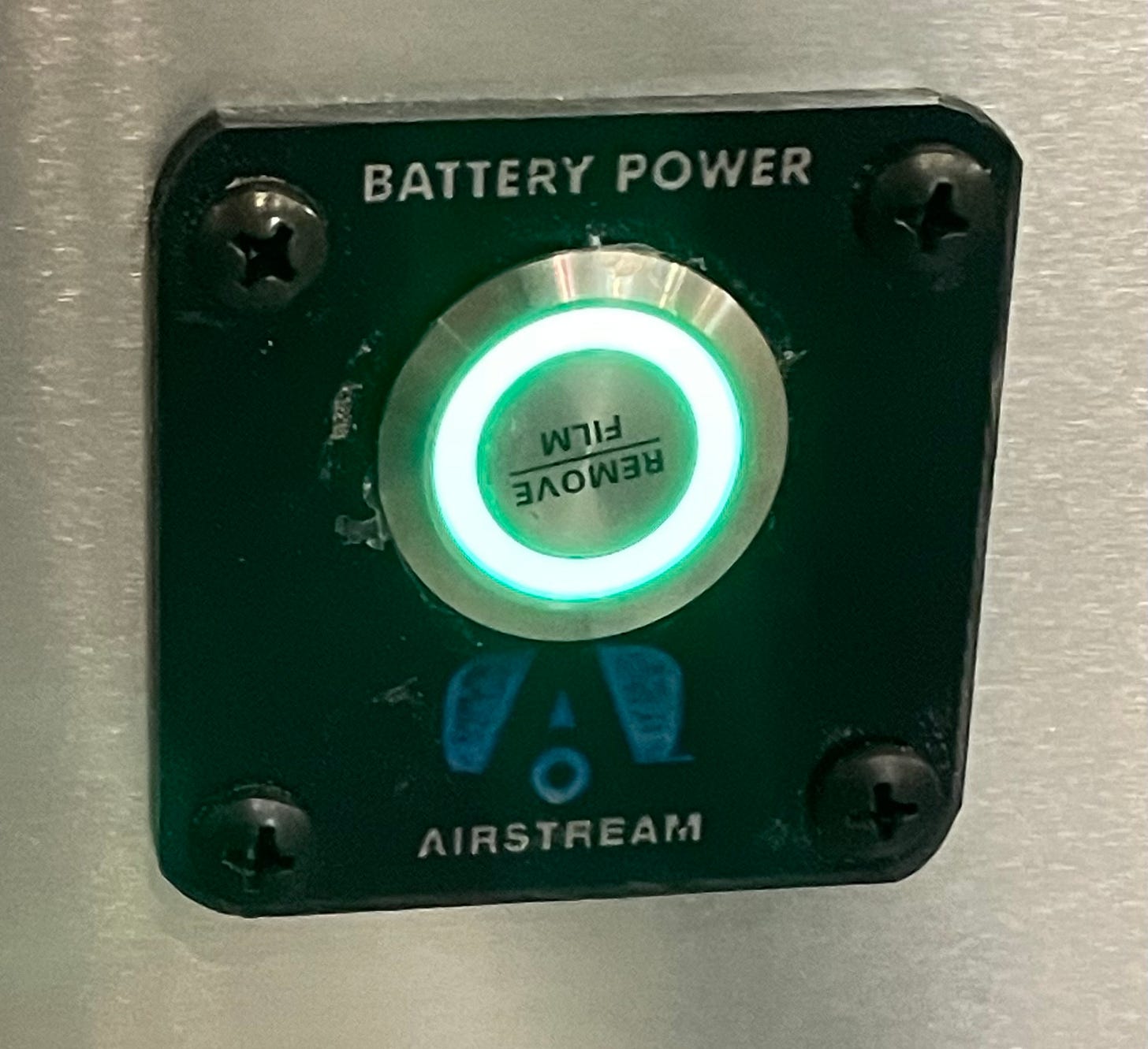Mystery Airstream Battery Killer Solved?
I've finally seen one in the wild, and now I may know what's happening...
Everyone,
A few weeks ago I posted an article about Lithium batteries in Airstreams self-discharging over winter storage at an alarming rate. I posited that there must be a parasitic current around 100mA to account for this effect. Read my previous article HERE.
What I learned at Tampa
I’ve been at the Tampa RV Supershow teaching RVelectricity seminars for the last two days, and I was able to get a close look at the Battery Power Switch by the door of all new Airstreams. And my original hypothesis appears to be correct.
There does appear to be a 100mA parasitic current in the system which drains the Lithium house batteries in a few weeks if you simply hit the Battery Power Button by the door and expect it to fully shut off your batteries.
Well, as I guessed it’s not really a battery disconnect. It turns off all major loads, but keeps 12-volt power going to the CO and LP detectors. This 100mA of parasitic current will drain any battery bank dead in a few weeks if left unchecked.
The Airstream Rep quoted from the manual saying that the batteries should be removed and stored inside your house or garage. If not, then they recommend putting a trickle charger on the battery bank monthly to keep it fully charged.
I don’t like either option…
That was good advice for Flooded Lead Acid batteries that can self-discharge at a rate of 10% or more per month. So unless you charge them occasionally, you’ll have dead lead-acid batteries by the time spring arrived. The idea was to put the batteries in your garage and hook them up to a trickle charger occasionally to keep them from discharging and being damaged.
Back to the future!
But modern Lithium batteries self-discharge at a rate of only 1% or so per month, and they really don’t care how cold they get. Plus be aware that you can’t charge them under 32 degrees F unless they have some sort of heater built into them or an outside electric blanket.
So it appears that the safest thing for all Lithium batteries is to charge them to 100% SoC (or whatever your battery manufacturer recommends), disconnect them completely from your RV’s electrical system (A negative disconnect switch might be the right way to do this) and leave them in place for the winter. But I have more to study on this so I’ll let you know as soon as I have an official recommendation.
It’s not just Airstream trailers…
I'm also told there’s a number of other manufacturers who are doing the same thing. So be sure to check your battery voltage every few weeks if this is the first time you’ve winterized it. Measure your battery voltage with a digital multimeter and see the chart below. If it drops by even 0.1 volts in a week, then there’s a parasitic current and something bad is going to happen.
So if there’s any significant voltage drop on your batteries you’ll need to get a charger on them or disconnect them completely. And remember, if the air temp is below 40 degrees F, you’ll probably need to warm your Lithium batteries up to above 40 degrees F before they can be safely charged.
Let’s play safe out there… Mike









I believe a shunt will have a tiny draw as well, mine is showing a tiny draw when the battery switch is off. I need to investigate further as my Li battery is discharging faster than 1%/month. The shunt does have a power wire that is always connected.
I installed an Anderson connector that allows me to easily remove my Battle Born 12V lithium battery from my trailer and use it for other purposes (or to charge it) when I’m not using my trailer. For example, I can bring the battery inside and use it to power a Power Station and extend its operating time by feeding it through tie 12V input port which will accept about 100 Watts. I’ve also used it to run a trolling motor. It feels much better to find alternative uses for these expensive lithium batteries which will difficult to cycle enough in an RV to reach their multi thousand cycle lifespans. BTW, I’ve left my battery sitting for many months and never seen it drop to a dangerously low voltage.